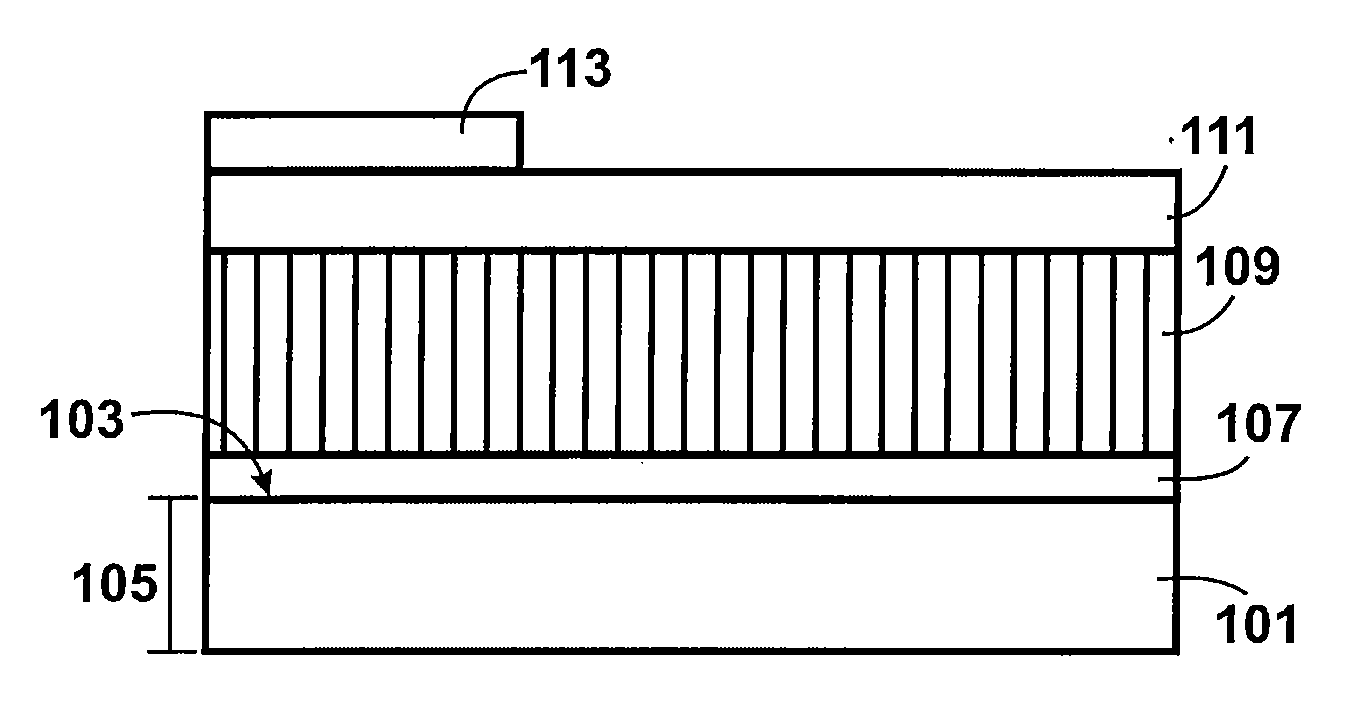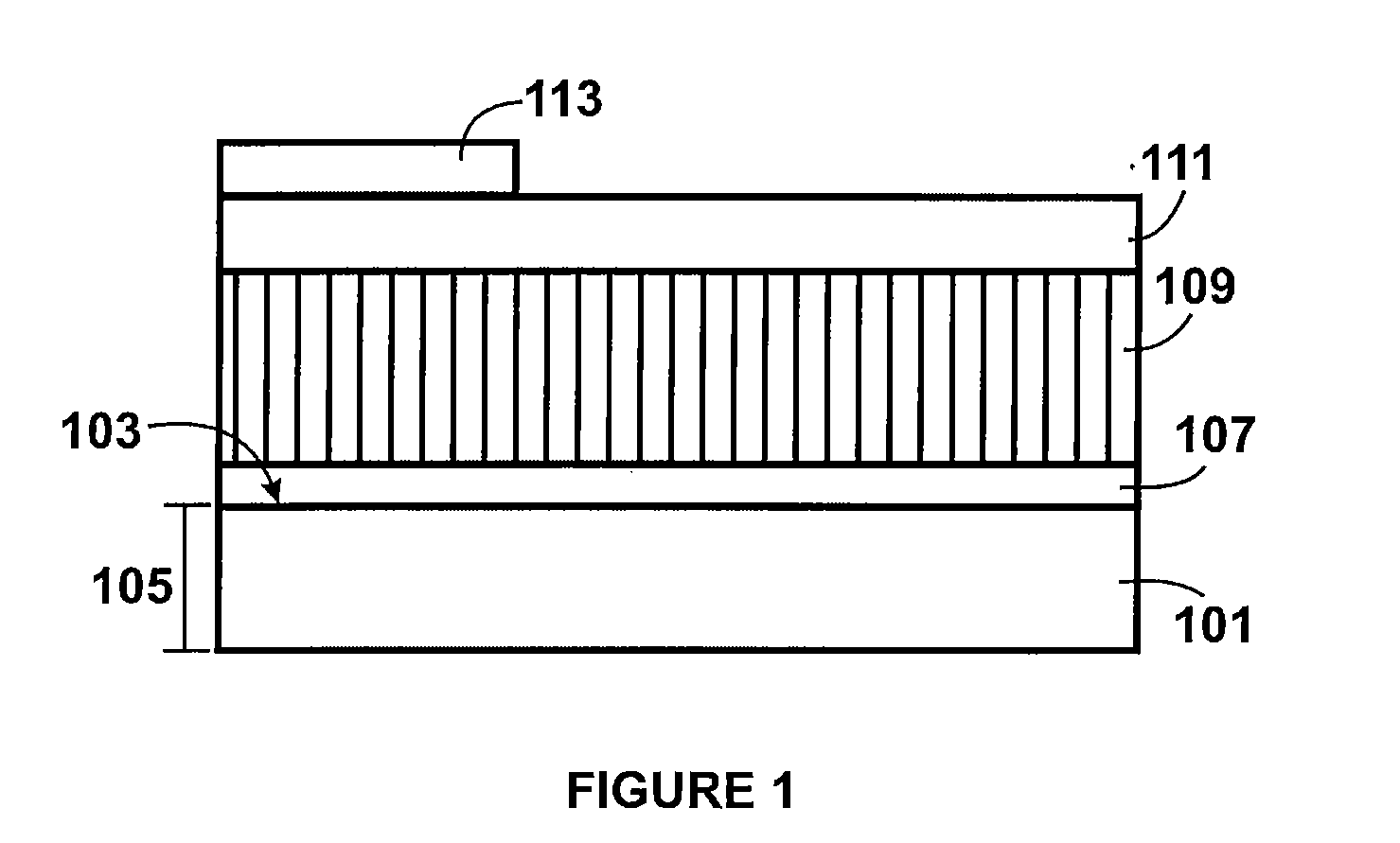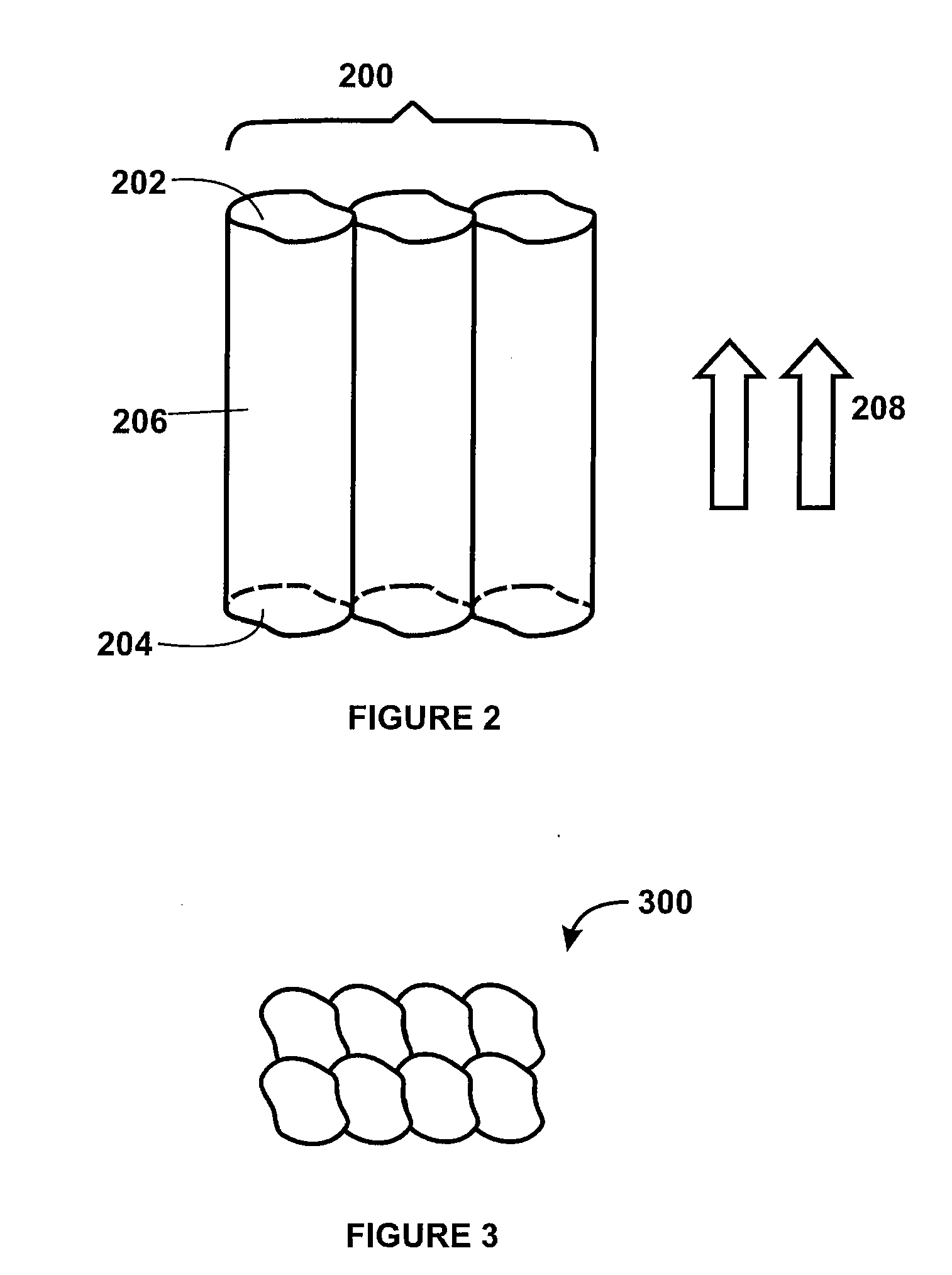Column structure thin film material using metal oxide bearing semiconductor material for solar cell devices
a technology of solar cell devices and thin film materials, applied in the field of photovoltaic materials, can solve the problems of reducing the processing efficiency of solar cell devices, so as to improve processing efficiency, facilitate use, and improve the effect of conversion efficiency
- Summary
- Abstract
- Description
- Claims
- Application Information
AI Technical Summary
Benefits of technology
Problems solved by technology
Method used
Image
Examples
Embodiment Construction
[0015]According to embodiments of the present invention, techniques for forming a thin film metal oxide semiconductor material are provided. More particularly, embodiments according to the present invention provide a method and structures for thin film metal oxide semiconductor material for solar cell application. But it would be recognized that embodiments according to the present invention have a much broader range of applicability.
[0016]FIG. 1 is a simplified diagram illustrating a solar cell device structure using a thin metal oxide semiconductor film structure for solar cell application according to an embodiment of the present invention. The diagram is merely an illustration and should not unduly limit the claims herein. One skilled in the art would recognize other modifications, variations, and alternatives. As shown in FIG. 1, a substrate 101 is provided. The substrate includes a surface region 103 and a thickness 105. The substrate can be a semiconductor such as silicon, si...
PUM
 Login to View More
Login to View More Abstract
Description
Claims
Application Information
 Login to View More
Login to View More - R&D
- Intellectual Property
- Life Sciences
- Materials
- Tech Scout
- Unparalleled Data Quality
- Higher Quality Content
- 60% Fewer Hallucinations
Browse by: Latest US Patents, China's latest patents, Technical Efficacy Thesaurus, Application Domain, Technology Topic, Popular Technical Reports.
© 2025 PatSnap. All rights reserved.Legal|Privacy policy|Modern Slavery Act Transparency Statement|Sitemap|About US| Contact US: help@patsnap.com



